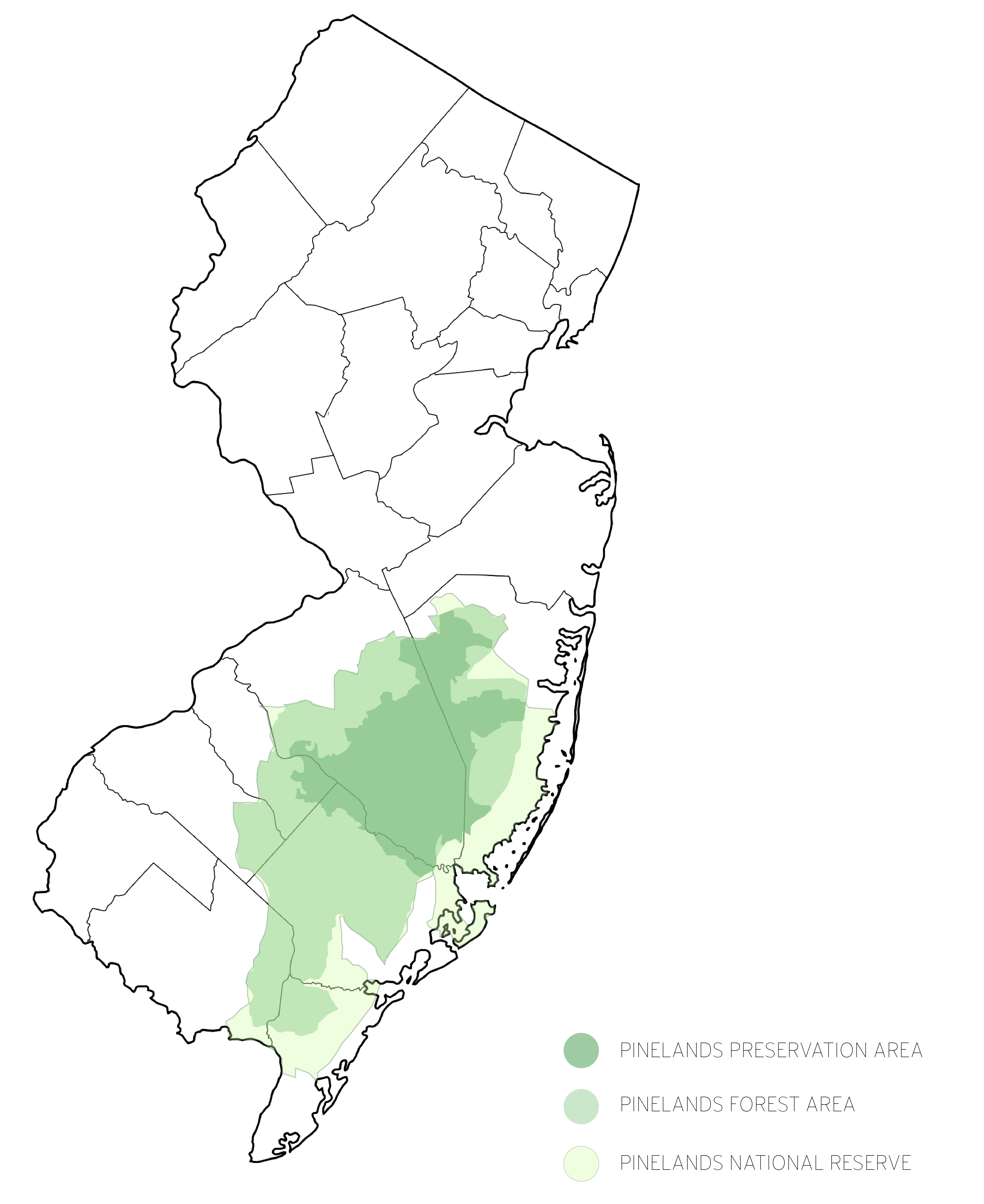
ENDANGERED & THREATENED SPECIES IN THE PINE BARRENS
15 bird species are endangered
1 mammal species is endangered
3 reptile species are endangered
3 amphibian species are endangered
2 invertebrate species are endangered
12 bird species are threatened
3 reptile species are threatened
2 amphibian species are threatened
2 invertebrate species are endangered
The New Jersey Pine Barrens falls within the ancestral homelands of the Lenapehoking (Lenni-Lenape) peoples.
Territorial recognition: https://native-land.ca/
Delaware Bay Most Pressing Issues List
Aquifer Stability
The Kirkwood-Cohansey Aquifer beneath the Pine Barrens provides freshwater to the region’s plant and animal species. The shallow water system is vulnerable to pollution from agricultural runoff. Demands from a growing population surrounding the Pine Barrens puts pressure on how much water can be diverted, risking species decline and habitat loss.
Climate Change
The New Jersey Coastline has risen 4-8 inches over the past 100 years. Rising temperatures and an increase in the severity of weather events threaten species habitats. Increased flooding also damages Pineland wetlands.
Pollution
Residential and agricultural runoff from surrounding populations threatens the interior of the Pine Barrens ecosystem. Proposals for commercial pipelines across the Pinelands risk species loss and severe environmental damage.
How You Can Help
Pinelands Preservation Alliance
The PPA is devoted to preserving the natural and historic resources of the New Jersey Pinelands. The organization operates Pinelands Adventures, an outdoor recreation program aimed at fostering public understanding and devotion to the Pinelands, and Rancocas Creek Farm, a sustainable organic farm connected to our mission to protect the Pinelands.
Learn More about Pinelands Preservation AllianceSouth Jersey Water Saver
South Jersey Water Savers is an educational campaign led by nine organizations, which are also part of the Delaware River Watershed Initiative. The campaign’s goal is to protect the Kirkwood-Cohansey Aquifer – South Jersey’s primary source of water.
Learn More about South Jersey Water Saver




